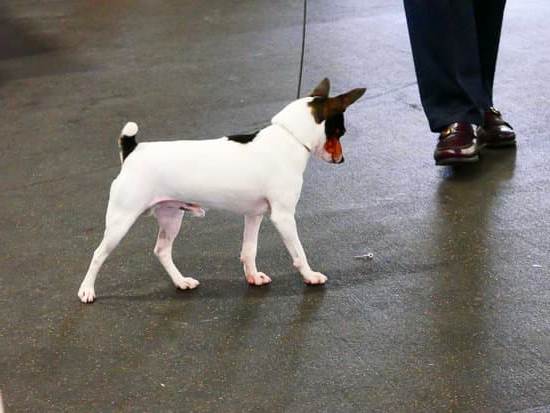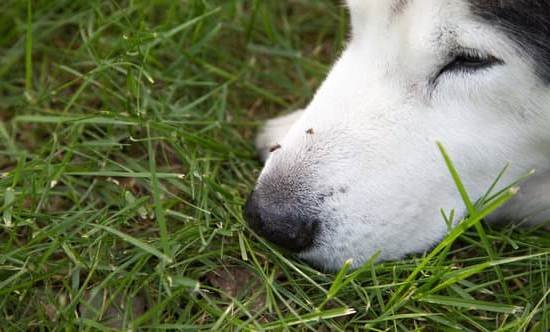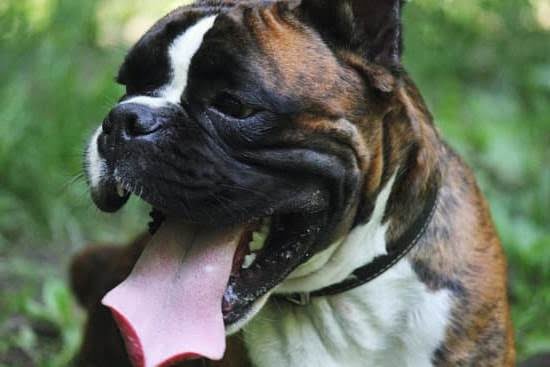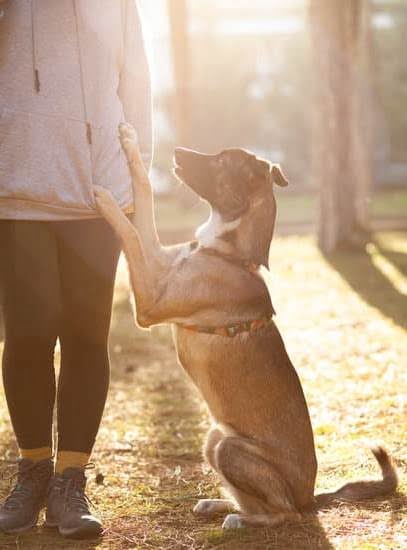Australian Cattle Dogs are known for their intelligence, agility, and strong herding instincts. However, along with these desirable traits, they also have a tendency to bite. It is essential to address this behavior early on and train your Australian Cattle Dog not to bite. In this article, we will explore the nature of Australian Cattle Dogs and their common biting tendencies. We will provide you with a comprehensive guide on how to effectively train your dog to inhibit biting behaviors.
Understanding the nature of Australian Cattle Dogs is crucial in tackling their biting tendencies. These dogs were originally bred for herding livestock, which required them to nip at heels and exhibit a level of assertiveness. As a result, they may have a predisposition towards nipping or biting behaviors. However, it is important to note that not all Australian Cattle Dogs will display aggressive biting tendencies.
To successfully train your Australian Cattle Dog not to bite, early socialization is key. Starting training and socialization at a young age can help prevent negative behaviors from developing into problematic habits later on. In the next sections of this article, we will discuss various techniques and exercises that you can implement to build trust with your dog and divert their biting instincts in positive ways.
By understanding the unique characteristics of Australian Cattle Dogs and recognizing the importance of early training and socialization, you can lay the foundation for preventing biting behaviors in your furry companion. With patience, consistency, and proper guidance outlined in this article, you will be well on your way to having a well-behaved and non-biting Australian Cattle Dog.
The Importance of Early Socialization
Early socialization plays a crucial role in preventing biting behavior in Australian Cattle Dogs. By exposing your dog to various people, animals, and environments from a young age, you can help them develop the necessary skills to navigate the world with confidence and minimize aggressive tendencies. This section will discuss the importance of early socialization and provide techniques for effectively socializing your Australian Cattle Dog.
Understanding the Critical Period
During the first few months of life, puppies go through a critical period of development where they are more receptive to learning and experiencing new things. This period typically starts at around three weeks old and lasts until about twelve to sixteen weeks old. Taking advantage of this critical period is essential for promoting positive experiences and preventing fear-based behaviors, including biting.
Exposing Your Puppy to Different Stimuli
To ensure proper socialization, introduce your Australian Cattle Dog puppy to a wide range of people, including adults, children, and individuals wearing hats or glasses. Familiarize them with common household objects such as vacuum cleaners, doors closing, loud noises like thunderstorms or fireworks by using recordings or sound machines gradually increasing volume as tolerance improves.
Additionally, it’s important to introduce your puppy to other animals in controlled environments such as puppy classes or supervised playdates. Proper exposure will help them learn appropriate canine communication signals while building their confidence in interacting with different species.
Positive Reinforcement Training During Socialization
Utilize positive reinforcement techniques during socialization exercises to reinforce good behavior. Reward your Australian Cattle Dog puppy with treats, praise, and playtime when they display calm and non-aggressive responses towards people and animals. As they grow older and encounter new situations or individuals that may initially trigger anxiety or fear-based responses, continue using positive reinforcement to reassure them that these situations are safe.
It is crucial not to rush the process of socializing your Australian Cattle Dog. Gradually increase the difficulty level of socialization exercises as your puppy becomes more comfortable and exhibits appropriate behavior. By starting early and implementing positive reinforcement techniques, you will greatly reduce the likelihood of biting behaviors in your Australian Cattle Dog as they grow older.
Building Trust
Building trust is an essential aspect of training an Australian Cattle Dog not to bite. By establishing a strong bond with your dog, you create a foundation of trust that will help them feel safe and secure in their environment. This, in turn, reduces the likelihood of them resorting to biting as a form of protection or defense. Here are some techniques and exercises to aid in building trust with your Australian Cattle Dog:
- Positive Reinforcement: Using positive reinforcement techniques, such as treats, praise, and rewards, helps create positive associations with you and the training process. When your dog behaves well or shows non-aggressive behaviors, immediately reward them to reinforce these desired actions. Over time, this positive reinforcement will strengthen the bond between you and your dog.
- Consistency: Dogs thrive on routine and consistency. Establishing a predictable daily routine for feeding, exercise, playtime, and training sessions helps build trust by providing structure and reliability in their lives. By consistently meeting their needs and being there for them when they need you, you demonstrate reliability and dependability that contributes to building their trust.
- Desensitization Exercises: Introduce your Australian Cattle Dog to various stimuli gradually to help them become more comfortable and confident in different situations. Start with low-intensity experiences while closely monitoring their reactions. Gradually increase the level of exposure over time as they grow more accustomed to potential triggers for aggression or fear.
Playtime Bonding
Playtime is an excellent opportunity to strengthen the bond between you and your Australian Cattle Dog while also teaching them appropriate behavior during interactions with humans. Engage in interactive play sessions that involve toys or games that promote proper chewing habits rather than biting behavior.
Physical Contact
Regular physical contact, such as gentle petting and massages, can help your Australian Cattle Dog develop trust in your touch. Start by slowly petting them in areas where they feel comfortable, gradually working toward areas that may be more sensitive or vulnerable for them. Always observe their body language for signs of discomfort and adjust accordingly.
Remember, building trust takes time and patience. Each dog is unique, so it’s important to be attuned to your Australian Cattle Dog’s individual needs and preferences. By consistently implementing these techniques and exercises, you will create a strong bond based on trust that will contribute to a well-trained and non-biting dog.
Basic Obedience Training
One of the key aspects of training an Australian Cattle Dog not to bite is teaching them basic obedience commands. These commands lay the foundation for developing good bite inhibition and impulse control in your dog. By consistently practicing these commands, you can help your Australian Cattle Dog understand what behaviors are expected of them and reinforce their self-control when it comes to biting.
1. Sit: Teaching your Australian Cattle Dog to sit on command is one of the first steps in basic obedience training. This command not only helps establish your leadership role but also encourages your dog to be calm and attentive. When your dog is sitting, it’s much harder for them to engage in biting behavior, making this command particularly useful in preventing unwanted biting incidents.
2. Stay: The “stay” command helps develop impulse control in your Australian Cattle Dog by teaching them to remain calm and still in a specific position until given permission to move. By practicing this command regularly, you can reinforce their self-restraint and reduce the likelihood of impulsive biting behavior. Start with short durations and gradually increase the time that your dog stays in place.
3. Leave it: Teaching your Australian Cattle Dog the “leave it” command is essential for bite inhibition as it teaches them to resist the urge to bite or take something they’re interested in. Begin by placing a treat or toy on the ground and covering it with your hand, saying “leave it.”
As soon as your dog diverts their attention away from the item, reward them with a different treat or toy. Repeat this exercise until they consistently understand that “leave it” means to ignore objects rather than attempting to grab or bite them.
By incorporating these fundamental commands into your dog’s training routine, you will not only lay the groundwork for bite inhibition but also strengthen your dog’s overall obedience and impulse control. Remember to be patient and consistent, rewarding your Australian Cattle Dog for their successful execution of these commands. With time, practice, and positive reinforcement, you can greatly reduce biting tendencies in your Australian Cattle Dog.
Bite Inhibition Techniques
Australian Cattle Dogs have a natural instinct to use their mouths, which can lead to biting behaviors if not properly managed. Therefore, it is crucial to teach them bite inhibition from an early age. Bite inhibition refers to the dog’s ability to control the force of their bites and use restraint when interacting with humans or other animals.
This skill is essential for preventing injury and ensuring a safe and harmonious living environment. Here are some effective techniques to teach your Australian Cattle Dog bite inhibition:
- Gentle feedback: When your dog bites too hard during play or training sessions, provide a gentle yelp or high-pitched “ouch” sound. This mimics how another dog would respond if bitten too roughly during play. Immediately stop play and withdraw attention for a few moments. By doing this consistently, your dog will learn that their bites cause discomfort and will naturally begin to inhibit the force of their bites.
- Soft mouth training: Encourage your Australian Cattle Dog to practice having a soft mouth by offering treats in a gentle manner. Hold a treat in your hand and allow your dog to take it without using too much force. If they bite down too hard, say “gentle” in a calm but firm tone and withdraw the treat briefly. Repeat this exercise until they learn to take treats softly.
- Controlled play sessions: Engage in supervised play sessions with your dog and other well-behaved dogs or puppies who understand proper bite inhibition. During these play sessions, monitor their interactions closely and intervene if necessary when the puppy becomes overly excited or starts nipping too hard. By observing good role models, such as older dogs who exhibit appropriate restraint during play, your Australian Cattle Dog can learn valuable social skills.
It is important to note that consistency is key when implementing these techniques. Practice them regularly and reinforce positive behaviors with rewards and praise.
Additionally, it is crucial to avoid any forms of punishment or physical force when teaching bite inhibition, as this can lead to fear or aggression issues. By using positive reinforcement and patience, you can effectively teach your Australian Cattle Dog to control the force of their bites and develop the necessary restraint for a well-behaved and safe companion.
| Technique | Description |
|---|---|
| Gentle Feedback | Provide a gentle yelp or “ouch” sound when your dog bites too hard, followed by withdrawing attention momentarily. |
| Soft Mouth Training | Encourage your dog to take treats gently by holding them in your hand and withdrawing the treat if they bite down too hard. |
| Controlled Play Sessions | Supervise play sessions with other dogs to allow your Australian Cattle Dog to learn proper bite inhibition from well-behaved role models. |
Addressing the Root Causes
When training an Australian Cattle Dog not to bite, it is essential to address the root causes that can trigger this unwanted behavior. By understanding and identifying common triggers such as fear, anxiety, and resource guarding, dog owners can take proactive steps to prevent biting before it occurs.
One of the primary triggers for biting in dogs is fear. Australian Cattle Dogs may resort to defensive biting if they feel threatened or scared. It is crucial for owners to create a safe and secure environment for their dogs and expose them gradually to different people, animals, and situations through controlled socialization experiences.
Another common trigger for biting behavior is anxiety. Dogs may become anxious when they are placed in unfamiliar or stressful situations. Recognizing signs of anxiety in your Australian Cattle Dog, such as pacing, excessive panting, or avoidance behaviors, can help you take appropriate measures to alleviate their stress. This may include providing a calm and structured environment, using positive reinforcement techniques during training sessions, or seeking professional help from a certified dog trainer or behaviorist.
Resource guarding is another potential cause of biting behavior in Australian Cattle Dogs. These dogs have a natural instinct to protect their possessions like food bowls, toys, or sleeping areas. To address resource guarding behaviors effectively, owners should implement desensitization exercises where the dog learns that humans approaching their possessions mean good things such as treats or praise rather than harm or loss of control.
Positive Reinforcement
Positive reinforcement is a powerful tool when it comes to training an Australian Cattle Dog not to bite. By rewarding desired behaviors, you can encourage appropriate play and discourage biting. This method focuses on reinforcing positive actions rather than punishing negative ones, creating a more positive and effective training experience for both you and your dog.
One important aspect of using positive reinforcement is timing. It is crucial to reward your Australian Cattle Dog immediately after they exhibit the desired behavior. This helps them make the connection between their actions and the reward, strengthening the association. Whether it’s offering a treat, verbal praise, or a favorite toy, choose rewards that are highly motivating and enjoyable for your dog.
In order to effectively use positive reinforcement, you need to clearly establish what behaviors you want to reinforce and which ones you want to discourage. For example, if your Australian Cattle Dog tends to nip during play, you can reward them when they engage in gentle play without biting.
Whenever they interact gently with people or other animals, offer praise and treats as a form of positive reinforcement. Consistency is key here – be sure to reward every instance of appropriate play in order for your dog to understand which behavior is desirable.
Additionally, it’s important to understand that every dog is different and may respond better to certain types of rewards. Some dogs may be motivated by food treats, while others prefer praise or playtime with their favorite toy. Experiment with different types of rewards to see which ones are most effective for your Australian Cattle Dog.
By using positive reinforcement techniques consistently and appropriately, you can create a strong association between good behavior and rewards in your Australian Cattle Dog’s mind. Over time, this will help encourage appropriate play while discouraging biting behaviors. Remember to be patient throughout the training process and celebrate small victories along the way. With time and effort, you can train an Australian Cattle Dog not to bite and enjoy a harmonious relationship with your furry friend.
Redirection and Distraction
Redirection and distraction techniques are essential when training an Australian Cattle Dog not to bite. These methods involve redirecting your dog’s biting instincts towards acceptable chew toys and engaging in alternative activities. By providing appropriate outlets for their natural need to chew and play, you can effectively discourage biting behavior.
Choosing the Right Chew Toys
When redirecting your Australian Cattle Dog’s biting instincts, it is crucial to select the right chew toys. Look for durable toys that are specifically designed for strong chewers, as these will be more resistant to damage. Avoid toys that resemble household items or clothing, as this can confuse your dog and encourage inappropriate chewing habits. Opt for toys that provide mental stimulation, such as puzzle toys or treat-dispensing toys, which can distract your dog from biting behaviors.
Positive Reinforcement with Alternative Activities
In addition to providing appropriate chew toys, engaging in alternative activities is another effective way to redirect your Australian Cattle Dog’s biting instincts. Offer interactive games like fetch or tug-of-war, where they can channel their energy and focus on a specific task rather than resorting to biting. Incorporate obedience training exercises into playtime sessions to reinforce good behavior and provide mental stimulation.
Redirecting Biting Behavior
When your Australian Cattle Dog starts exhibiting unwanted biting behavior, immediately redirect their attention towards an acceptable chew toy or engage them in an alternative activity. This helps them understand what is appropriate for them to bite and provides them with a positive outlet for their chewing instincts. Consistency is key in this process – ensure that every time your dog attempts to bite something unsuitable, you intervene promptly and redirect their focus onto a more acceptable option.
By diligently applying redirection and distraction techniques, you can help prevent your Australian Cattle Dog from developing harmful biting habits. Remember to consistently reinforce positive behavior by rewarding them when they engage appropriately with chew toys or alternative activities. With time, patience, and consistency, your dog will learn to redirect their biting instincts and engage in appropriate behavior, leading to a harmonious coexistence for both you and your Australian Cattle Dog.
Seeking Professional Help
While training an Australian Cattle Dog not to bite can be done successfully with the right knowledge and techniques, there are situations when seeking professional help becomes necessary. Consulting a professional dog trainer or behaviorist can provide specialized guidance and expertise in dealing with biting issues that may be more complex or severe.
One important factor to consider is the severity of the biting behavior. If your Australian Cattle Dog’s biting is aggressive, frequent, or escalating in intensity, it is recommended to seek professional help as soon as possible. Aggressive biting can pose a risk to yourself, other animals, and even strangers, so it is crucial to address these issues promptly and effectively.
Additionally, if you have tried various training methods and strategies without seeing any improvement in your dog’s biting behavior, it may indicate that you need professional assistance. A professional dog trainer or behaviorist can evaluate your specific situation and create a customized training plan tailored to your Australian Cattle Dog’s needs.
Another reason to consult a professional is if you feel overwhelmed or unsure about how to handle your dog’s biting behaviors. They can provide guidance on managing your own emotions and reactions while implementing effective training techniques. They can also offer support and peace of mind during what may be a challenging time.
When seeking professional help for biting issues, it is essential to choose someone reputable and experienced in working with Australian Cattle Dogs or similar breeds known for their nipping tendencies. Look for certifications such as Certified Professional Dog Trainer (CPDT) or Certified Applied Animal Behaviorist (CAAB).
Remember that seeking professional help does not mean you have failed as a dog owner/trainer but rather it shows your commitment to addressing the issue appropriately and ensuring the safety and well-being of both your Australian Cattle Dog and those around them.
| Signs to Consider Consulting a Professional | Reason |
|---|---|
| Frequent, aggressive biting | Biting poses a potential danger and requires immediate attention. |
| No improvement with training efforts | A professional can offer new insights and strategies tailored to your dog’s specific needs. |
| Feeling overwhelmed or unsure | A professional can provide support, guidance, and reassurance during the training process. |
Consistency and Patience
Training an Australian Cattle Dog not to bite requires consistency and patience. Dogs, especially herding breeds like the Australian Cattle Dog, thrive on routine and repetition. It is crucial to establish a consistent training routine and stick to it. This helps the dog understand what is expected of them and promotes learning.
Consistency in training means using the same cues, commands, and methods every time you work with your Australian Cattle Dog. For example, if you use the cue “leave it” to discourage biting, make sure to use that same cue consistently. Using different words or gestures can confuse your dog and make it harder for them to understand what you want from them.
Along with consistency, patience is key when training an Australian Cattle Dog not to bite. Changing behavior takes time, and it is important not to rush or become frustrated with your dog’s progress. Avoid getting angry or using punishment-based methods as they can damage trust and hinder the training process.
Instead, focus on positive reinforcement techniques such as rewards and praise when your Australian Cattle Dog exhibits appropriate behaviors. Celebrate even small successes along the way as this will motivate your dog to continue learning.
Maintaining a consistent training routine requires commitment from both you and your family members or anyone who interacts with the dog regularly. Everyone involved should be on the same page about what behaviors are allowed and what are not. Consistency across all interactions will help reinforce desired behaviors while discouraging biting tendencies.
| Aspect | Data |
|---|---|
| Average Training Time | 15-20 minutes per session |
| Training Frequency | At least five sessions per week |
| Average Training Duration | 6-8 weeks to see significant improvements |
Conclusion
In conclusion, training an Australian Cattle Dog not to bite requires a well-rounded approach that focuses on early socialization, building trust, and addressing the root causes of biting behavior. It is crucial to start training and socialization early in order to prevent the development of biting tendencies. By establishing a strong bond and trust with your dog through techniques and exercises, you can create a foundation for successful training.
Basic obedience training plays a vital role in bite inhibition. Teaching commands such as “sit,” “stay,” and “leave it” not only establishes your authority but also provides the dog with alternative behaviors to resort to instead of biting. Additionally, implementing effective bite inhibition techniques helps your dog learn to control the force of their bites and develop restraint.
Identifying and addressing the root causes of biting behavior is essential for long-term success. Fear, anxiety, and resource guarding are common triggers that can lead to aggressive or defensive biting. By understanding these triggers and working to alleviate them through positive reinforcement, you can help your Australian Cattle Dog overcome their inclination towards biting.
Consistency and patience are key throughout the training process. Maintaining a consistent routine reinforces desired behaviors and prevents confusion for your dog. Patience is necessary as every dog learns at their own pace and progress may be gradual. Remember that seeking professional help from a trained dog trainer or behaviorist is an option if you find yourself struggling or if your dog’s biting behavior becomes unmanageable.
Ultimately, having a well-trained, non-biting Australian Cattle Dog contributes to a harmonious coexistence between you, your pet, and others around you. A well-socialized dog who understands bite inhibition has better manners when interacting with humans and other animals. By investing time and effort into training your Australian Cattle Dog not to bite, you are ensuring a safer environment while fostering a loving relationship based on trust and respect.
Frequently Asked Questions
How do you train a cattle dog not to bite?
Training a cattle dog not to bite requires consistent and patient efforts. It is important to establish clear boundaries and provide appropriate outlets for their energy. Start by teaching basic obedience commands such as “sit,” “stay,” and “leave it.”
Using positive reinforcement techniques like treats, praise, and rewards can help reinforce good behavior and discourage biting. Additionally, socializing the dog with other dogs, animals, and people from an early age can help them learn appropriate behavior and reduce territorial aggression. Consistency in training methods and setting rules is key to effectively train a cattle dog not to bite.
Why does my Australian Cattle Dog bite so much?
Australian Cattle Dogs may exhibit biting behavior for various reasons which can range from teething or playfulness to fear or anxiety. Biting is often a form of communication for dogs, especially when they feel threatened or stressed. It’s essential to identify the triggers that provoke the biting behavior in your specific dog.
Excessive biting could potentially be due to inadequate exercise or mental stimulation, which can result in frustration leading to unwanted behaviors. Ensuring that your Australian Cattle Dog receives sufficient physical exercise through walks, runs, or playtime can help reduce excessive biting tendencies by channeling their energy in more positive ways.
Are Australian cattle dogs known for biting?
Australian cattle dogs are known for being energetic and independent working breeds rather than being particularly prone to biting specifically. However, like any dog breed, individual variability exists within the breed itself. Some dogs may display behaviors such as nipping or mouthing due to hereditary traits or lack of proper training/socialization during puppyhood.
Proper training methods from an early age are crucial in molding their behavior appropriately and reducing any potential nipping habits. While some Australian Cattle Dogs might exhibit a higher tendency towards biting compared to other breeds because of their working background, responsible ownership practices including consistent training can minimize these behaviors significantly

Welcome to the blog! I am a professional dog trainer and have been working with dogs for many years. In this blog, I will be discussing various topics related to dog training, including tips, tricks, and advice. I hope you find this information helpful and informative. Thanks for reading!





